
Gothic fiction, which is largely known by the subgenre of Gothic horror, is a genre or mode of literature and film that combines fiction and horror, death, and at times romance. Its origin is attributed to English author Horace Walpole, with his 1764 novel The Castle of Otranto, subtitled "A Gothic Story". It was further developed by Clara Reeve, Ann Radcliffe, William Thomas Beckford and Matthew Lewis.
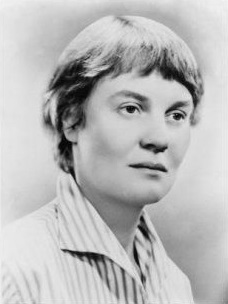
Dame Jean Iris Murdoch was an Irish and British novelist and philosopher. Murdoch is best known for her novels about good and evil, sexual relationships, morality, and the power of the unconscious. Her first published novel, Under the Net, was selected in 1998 as one of Modern Library's 100 best English-language novels of the 20th century. Her 1978 novel The Sea, the Sea won the Booker Prize. In 1987, she was made a Dame by Queen Elizabeth II for services to literature. In 2008, The Times ranked Murdoch twelfth on a list of "The 50 greatest British writers since 1945".

The Sea, the Sea is a novel by Iris Murdoch. Published in 1978, it was her nineteenth novel. It won the 1978 Booker Prize.

Under the Net is a 1954 novel by Iris Murdoch. Set in London, it is the story of a struggling young writer, Jake Donaghue. Murdoch's first novel, its mixture of the philosophical and the picaresque has made it one of Murdoch's most popular novels.
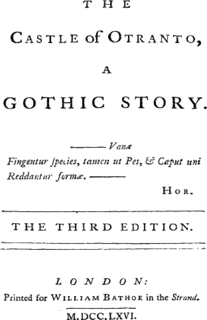
The Castle of Otranto is a book by Horace Walpole first published in 1764 and generally regarded as the first gothic novel. In the second edition, Walpole applied the word 'Gothic' to the novel in the subtitle – "A Gothic Story". The novel merged medievalism and terror in a style that has endured ever since. The aesthetic of the book has shaped modern-day gothic books, films, art, music and the goth subculture.
Peter J. Conradi is a British author and academic, best known for his studies of writer and philosopher, Iris Murdoch, who was a close friend. He is a Professor Emeritus of English at the University of Kingston and has been Visiting Fellow at Magdalen College Oxford and Research Fellow at University College London.

The Red and the Green is a novel by Iris Murdoch. Published in 1965, it was her ninth novel. It is set in Dublin during the week leading up to the Easter Rising of 1916, and is her only historical novel. Its characters are members of a complexly inter-related Anglo-Irish family who differ in their religious affiliations and in their views on the relations between England and Ireland.

The Last Unicorn is a fantasy novel by American author Peter S. Beagle and published in 1968, by Viking Press in the U.S. and The Bodley Head in the U.K. It follows the tale of a unicorn, who believes she is the last of her kind in the world and undertakes a quest to discover what has happened to the others. It has sold more than five million copies worldwide since its original publication, and has been translated into at least twenty languages. In 1987, Locus ranked The Last Unicorn number five among the 33 "All-Time Best Fantasy Novels", based on a poll of subscribers. The 1998 rendition of the poll ranked The Last Unicorn number 18.
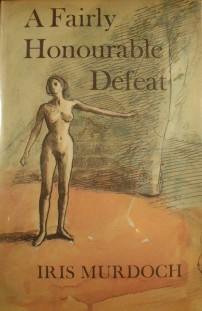
A Fairly Honourable Defeat is a novel by the British writer and philosopher Iris Murdoch. Published in 1970, it was her thirteenth novel.
Georg Kreisel FRS was an Austrian-born mathematical logician who studied and worked in the United Kingdom and America.

The Bell is a novel by Iris Murdoch. Published in 1958, it was her fourth novel. It is set in a lay religious community situated next to an enclosed order of Benedictine nuns in Gloucestershire.
Effingham Lysaght Richardson (1860–1947) was an Irish trade unionist.
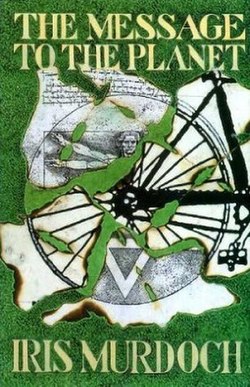
The Message to the Planet is a novel by Iris Murdoch. Published in 1989, it was her twenty-fourth novel.

The Sacred and Profane Love Machine is a novel by Iris Murdoch. Published in 1974, it was her sixteenth novel. It won the Whitbread Novel Award for 1974.

The Nice and the Good is a novel by Iris Murdoch. Published in 1968, it was her eleventh novel. The Nice and the Good was shortlisted for the 1969 Booker Prize.

An Unofficial Rose is a novel by Iris Murdoch. Published in 1962, it was her sixth novel.
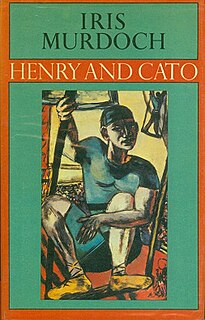
Henry and Cato is a novel by Iris Murdoch. Published in 1976, it was her eighteenth novel.

An Accidental Man is a novel by Iris Murdoch, which was published in 1971. It was her fourteenth novel.

The Time of the Angels is a philosophical novel by British novelist Iris Murdoch. First published in 1966, it was her tenth novel. The novel centres on Carel Fisher, an eccentric Anglican priest who is the rector of a London church which was destroyed by bombing during World War II. Fisher denies the existence of God and the possibility of human goodness in a post-theistic world. The novel, which has elements of Gothic fiction, received mixed reviews on its publication.

Sartre: Romantic Rationalist is a book by Iris Murdoch. Published in 1953 by Bowes & Bowes of Cambridge, it was Murdoch's first book and the first book about Jean-Paul Sartre's work to be published in English.

















